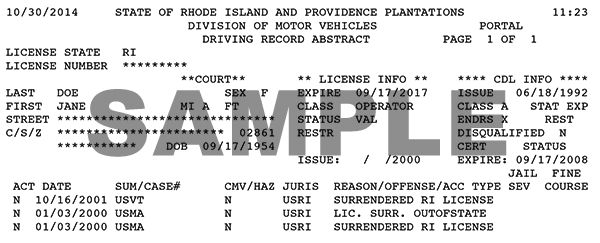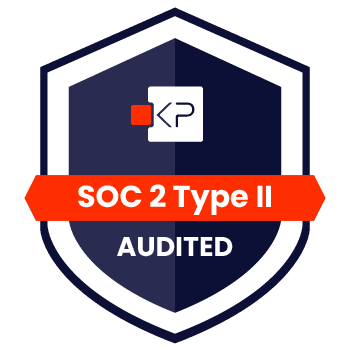What Is an MVR?
- Full name is a Motor Vehicle Report. Also known as a Driver’s License Verification, or a Driver’s License Background Check.
- The MVR checks the driving record of a potential employee.
- These records are kept by the Department of Motor Vehicles in each state. There is no such thing as a national database to search driving records, so MVRs are typically done only for the state where an applicant holds a current license.
Why are MVRs important?
- Employers want and need to know that an employee that will be driving for them is safe and responsible behind the wheel. By thoroughly screening a prospective hire, a company can ensure they obtain honest, reliable employees.
- Employee driving records have become an important Fleet Safety Program component. They can help protect a company against litigation after an accident.
- MVRs are a very important piece of the background screening process for many industries. If you are working in a DOT regulated industry, you are required to request a new copy of each driver’s MVR every 12 months.
What does the MVR show and what are the benefits of an MVR?
- An MVR is an essential part of a defense against negligent hiring claims for employees who drive company vehicles or who drive on company business.
- It verifies that an applicant has the driver’s license claimed. MVRs may also provide information regarding irresponsible behavior, including whether there is a history of substance abuse, repeated traffic violations, failures to appear, and unpaid fines.
- They may provide name and address information that is useful (especially when an applicant is trying to hide something) in the criminal record aspect of a background check.
The amount of information you can get from an MVR check varies by state. Some states only keep records for 3 years, others for as long as 10. If there is negative information reported on an MVR in the report, the same adverse reaction requirements apply as they would with criminal records. An applicant must be given a copy of the report and be given time to correct any mistakes before any adverse hiring decision is made.
To see a sample MVR, click the following link – https://www.clearscreening.com/samplereports/MVRSample.pdf
What are the challenges of an MVR?
- Each state has its own rules and regulations as to how MVRs are kept and released. Additional forms may be required to access these records.
- Some states do not even permit prospective employers to access MVRs.
How do employers obtain access to an applicant’s Driving Record?
If you’ve decided pulling an MVR report is in your best interest as an employer, there are a few ways you can access an applicant’s driving record:
- Ask your applicant to obtain his or her own driving record and submit it. This may turn away a handful of potentially good applicants who don’t have the time or interest to go to the DMV.
- Order the MVR from your state’s DMV, Secretary of State, Department of Revenue, Department of Public Safety or Motor Vehicle Division for a small fee.
- Purchase a driving record from a pre-approved third-party vendor. (Make sure they are reputable and compliant).
How long does it take to get an MVR?
- Most MVRs are returned within one to three business days from the order date. However, each state has its own rules and regulations as to how records are kept and released. Name variations, incorrect or missing license numbers, etc., can also cause delays.
- There are a limited number of countries outside the U.S. where MVRs are available. For more information, do an International Driving Record Search.
Some statistics regarding the financial impact of vehicular safety on companies:
- Motor vehicle crashes cost companies $60 billion annually in legal expenses, lost productivity, medical care and property damage.
- When an employee is involved in an on-the-job crash that results in injury, the cost to their employer-on average-is $74,000. If a fatality is involved, the employer may be forced to pay up to $500,000, and if punitive damages are awarded, the employer may have to pay millions of dollars.
The importance of hiring a safe and responsible driver can not be stressed enough!
[The average motor vehicle crash costs an employer $16,500. Source: OSHA]
Four Best Practices to monitor your drivers’ MVRs:
- Check driver MVRs monthly. The U.S. DOT requires employers to pull an MVR once a year for all commercial drivers. But to get the whole picture, you should review your drivers’ behavior monthly. Anything less frequent and you could be missing something that could expose the company to liability.
- Understand the DMV point system. States have different points systems, so it’s important to understand the point system in your state so that you will understand any violations your drivers have committed – both on and off the clock – and the severity of those violations.
- Telematics and GPS alone are not enough. This data doesn’t show a driver’s on-road behavior when he is not in a company vehicle. Most crashes happen overnight when many employees are off the clock. Telematics and GPS data won’t tell you if a driver was arrested for DUI the night before or if they were involved in a crash last week in their personal vehicle.
- Don’t let risky behavior go uncorrected. Action should be taken to improve any deficiencies or risky driving behavior with additional training and coaching. By identifying and correcting deficiencies, you can improve the safety of both your fleet and everyone else on the road.
Additional Helpful Information – Check out the MVR Grading Checklist to help determine an applicant’s employment eligibility – http://www.mydominosinsurance.com/MVR%20Grading%20Tips%204.pdf
Sources:
“Best Practices For Monitoring Drivers’ MVRs, Feb. 23, 2018, Smith System.
“MVR Check: What is it and Why is it Important?”, July 24, 2017, Jennifer Gladstone.
“Motor Vehicle Report/MVR: Drivers License Verification”, Sept. 2019, A Matter of Fact.


